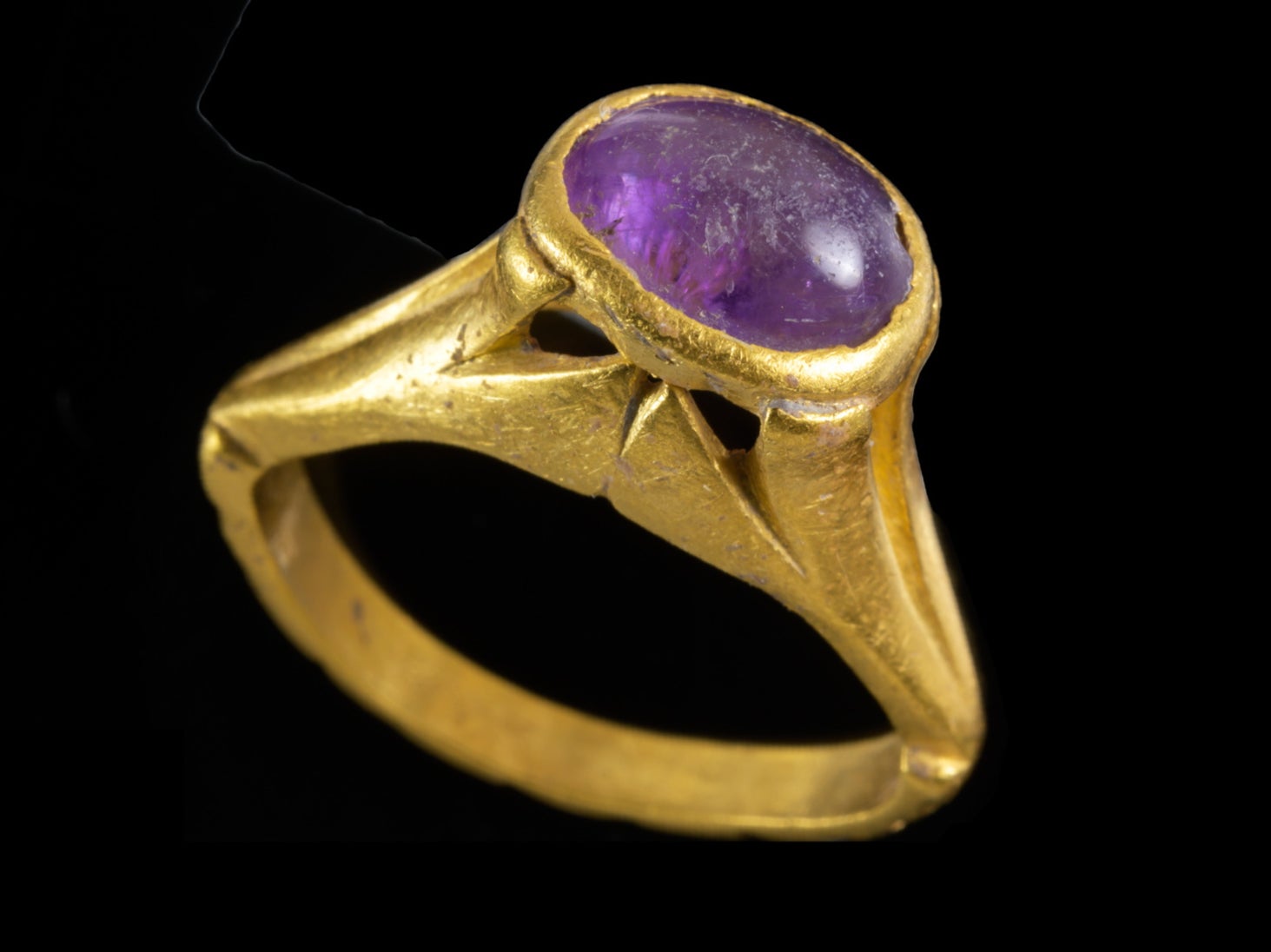
A greasy fry-up, drinking plenty of fluids, the so-called hair of the dog or even knocking back raw eggs – these are just some of the ways in which we try to combat a hangover.
But it seems our ancestors had a little more sense when it came to getting rid of a fuzzy head – and instead used an amethyst ring to make themselves feel brighter.
According to the Israel Antiquities Authority, archaeologists in Israel discovered the gold and purple ring in the city of Yavne, the site of the Byzantine era’s largest known winery (which, of all places, would need a good go-to hangover cure).
The ring was found just 150 meters away from where amphorae, a type of jar used to store wine, was found amid remains from a warehouse.
“Many virtues have been attached to this gem, including the prevention of the side effect of drinking, the hangover,” Dr. Amir Golani explained in a statement.
בחפירת ביבנה שבמסגרתה התגלה יקב היין הענק, נחשפה לאחרונה טבעת זהב משובצת. לאבן המשובצת, אמטיסט, נקשרו סגולות רבות ובהן מניעת האנגאובר. עובדה זו מעניינת על רקע ההקשר בו נתגלתה הטבעת - מפעל יין ענק, הגדול בעולם הידוע מהתקופה הביזנטית 💍 קרדיט: דפנה גזית pic.twitter.com/Da98nME4rJ
— רשות העתיקות - Israel Antiquities Authority (@AntiquitiesIL) November 2, 2021
So why exactly were amethyst jewels associated with preventing hangovers?
In Greek mythology, amethysts are dyed purple by the tears of Dionysus, the god of wine.
Meanwhile, the name “amethyst” comes from the ancient Greek word “amethystos” meaning “not intoxicated” – therefore evoking the belief that the stone protected its owner from the effects of drunkenness, according to Greek City Times.
Amethysts are also mentioned in the Bible so had religious connotations, Golani explained. Thus, the gem was believed to have other “virtues.”
So who exactly would own such a jewel back then? While the exact owner of the ring is unknown, experts have shared their knowledge as to what kind of person would own the gold amethyst ring.
“Gold rings inlaid with amethyst stone are known in the Roman world, and it is possible that the ring’s find belongs to the elites who lived in the city as early as the 3rd century CE,” the IAA said.
Meanwhile, Dr. Elie Haddad, a co-director of the excavation, added that the ring probably belonged to “belonged to the owner of the magnificent [winery] warehouse, to a foreman” or possibly to an “unlucky visitor, who dropped and lost their precious ring.”
“The wearing of the jewel indicated their status and wealth,” Golani added. “Such rings could be worn by both men and women.”
It is estimated that the excavation site dates all the way back to the end of the Byzantine era and the start of the Early Islamic period – around the 7th century.
Think we can all agree that life would be a lot easier if a pretty piece of jewellery really could cure our hangovers.







